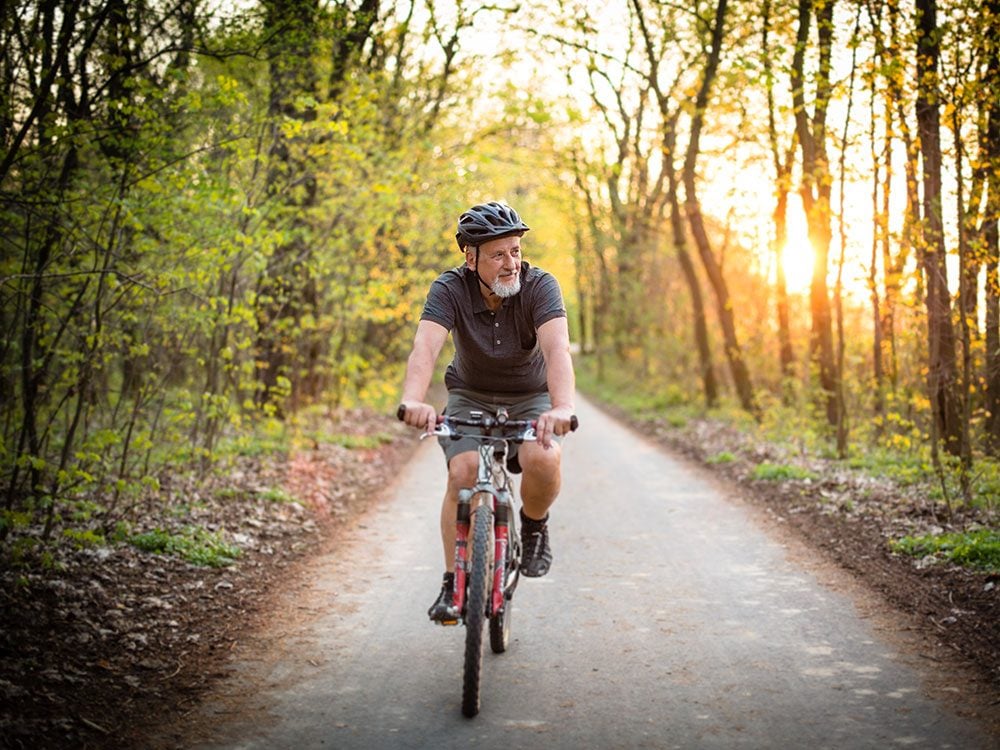
This is how much physical activity Canadians aged 65+ need each week
We know the saying all too well: “Age is just a number.”
But as we enter our golden years, there’s a number we should be more concerned about than the count of candles on a birthday cake. That number is 150, and it’s the length of time (in minutes) of moderate to vigorous physical activity that Canadians aged 65+ require each week for optimal health. The good news? Clocking those 150 minutes doesn’t cost a thing. That’s right—you don’t need to own a gym membership or be an Olympic athlete to meet that goal. Moderate to vigorous physical activity is the kind that revs your heart rate—even just a bit—and can be as simple as going for a walk with your neighbour, or checking out a local hiking trail with your partner. It could even involve getting off the bus one stop earlier than you normally would, and walking the rest of the distance. Adding these small doses of physical activity to your daily routine will leave you feeling energized, leaving you less prone to injury and a host of other health problems. Here are the five ways moving more actually helps you age better.
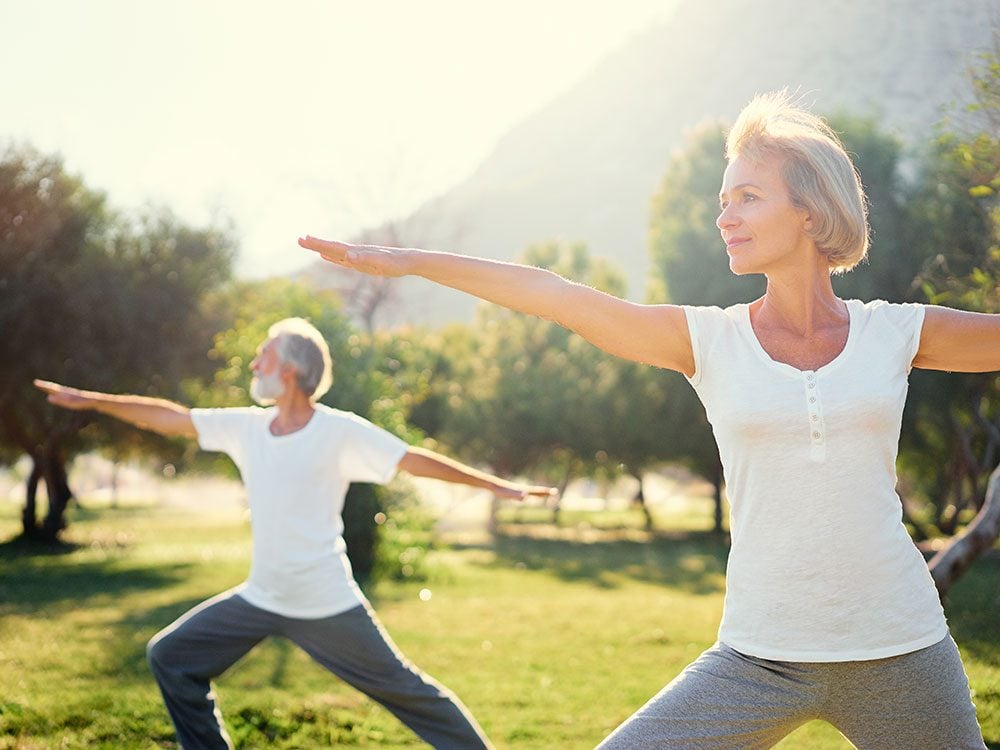
1. Getting active keeps you steady on your feet
According to research published by the World Health Organization, roughly a third of people aged 65 and up fall at least twice each year. That’s an eye-opening statistic, as even a simple stumble can result in broken bones, decreased mobility and anxiety—sometimes referred to as post-fall syndrome. Slashing your risk for a serious fall is as simple as moving more. As you engage in more physical activity, you build muscle and strengthen supporting ligaments. These in turn improve your stability, balance and strength, making it less likely for you to fall. The right footwear is also key, so make sure you’re wearing appropriate shoes for the physical activity you’re engaged in. Here’s why it’s important those shoes fit properly, too.
This is the leading cause of injury to seniors—and it’s often preventable.
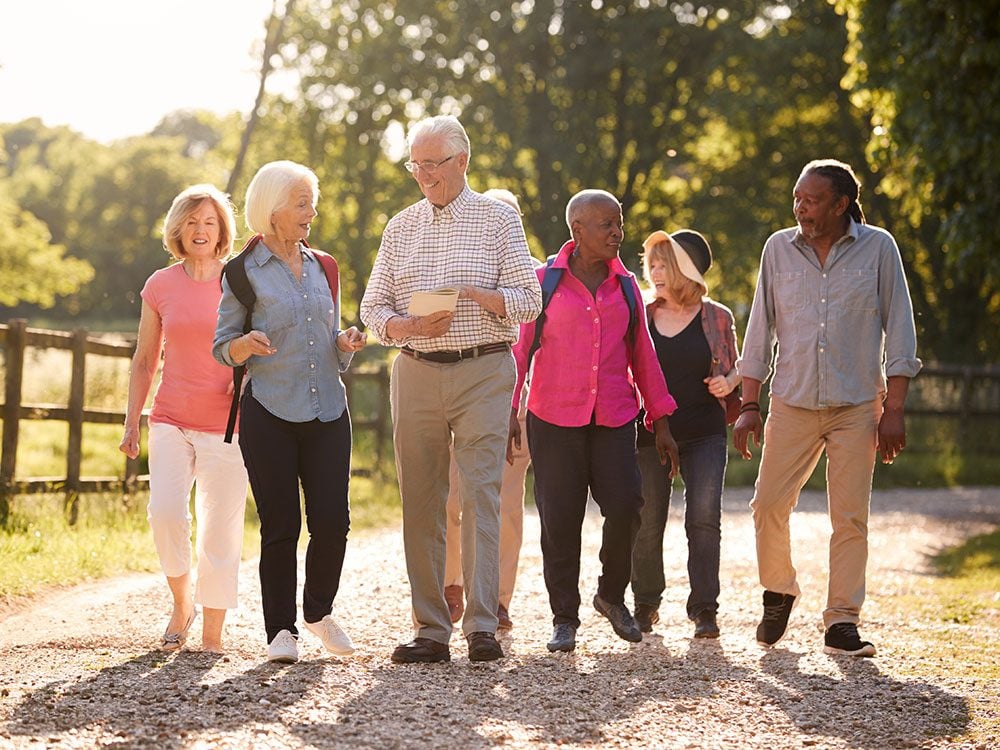
2. Getting active means getting social
Despite all the ways social media keeps us connected, maintaining healthy social bonds isn’t always easy. In fact, it’s something that becomes even more challenging as we get older. One way to ensure you’re connecting with others in meaningful ways is through physical activity. Getting active with others is a great way to have fun and make new friends while at the same time increasing your mobility. The benefits extend beyond social bonding, too: research shows that the more you move, the more energetic you’ll feel! Group activities like pickle ball, Tai chi or dancing are great options for older adults looking to “up” their social game.
Here are five more great exercises for seniors to build strength, improve balance and boost heart health.
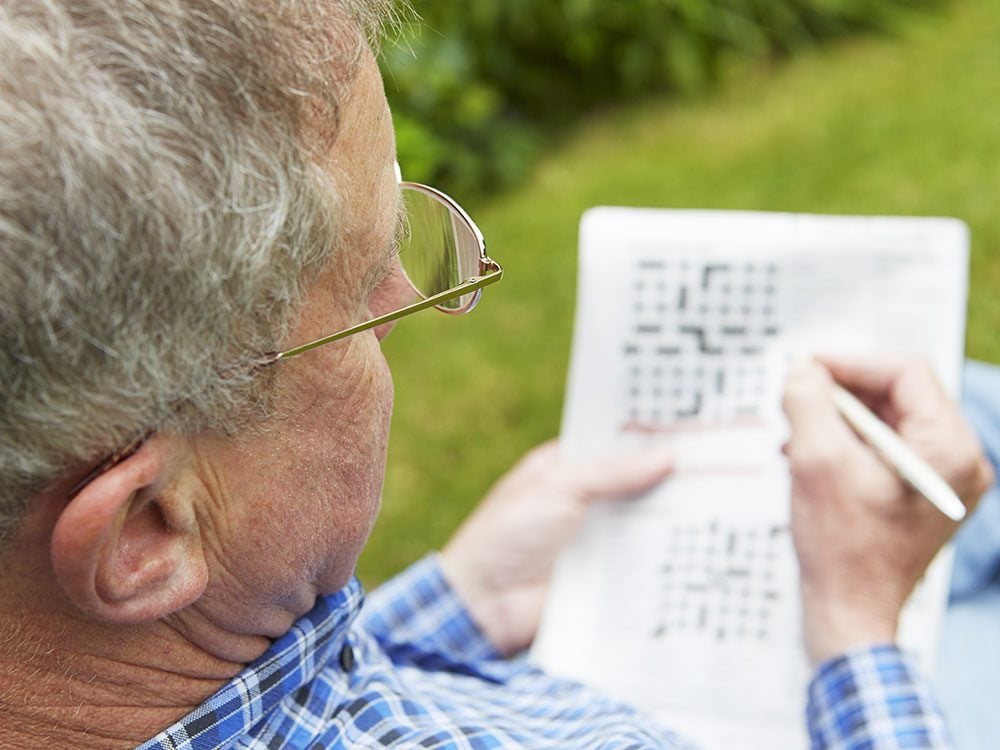
3. Getting active helps you stay mentally sharp
As the Canadian population continues to age, cognitive decline and dementia are an increasing concern. A recent report projects that by 2031, nearly 1.4-million Canadians will be affected by these devastating conditions, which will not only create a challenging situation for the seniors and families directly affected, but will also cost our health care system in excess of $16-billion. One low-cost and relatively easy way to combat those growing numbers? You guessed it: physical activity. The brain is a dynamic organ filled with changing tissue, and physical activity actually has the power to actually stimulate brain cell growth. It also has beneficial effects on the hippocampus, the area of the brain responsible for boosting memory and learning. So, when you commit to that yoga class, you’re strengthening a lot more than just your core!
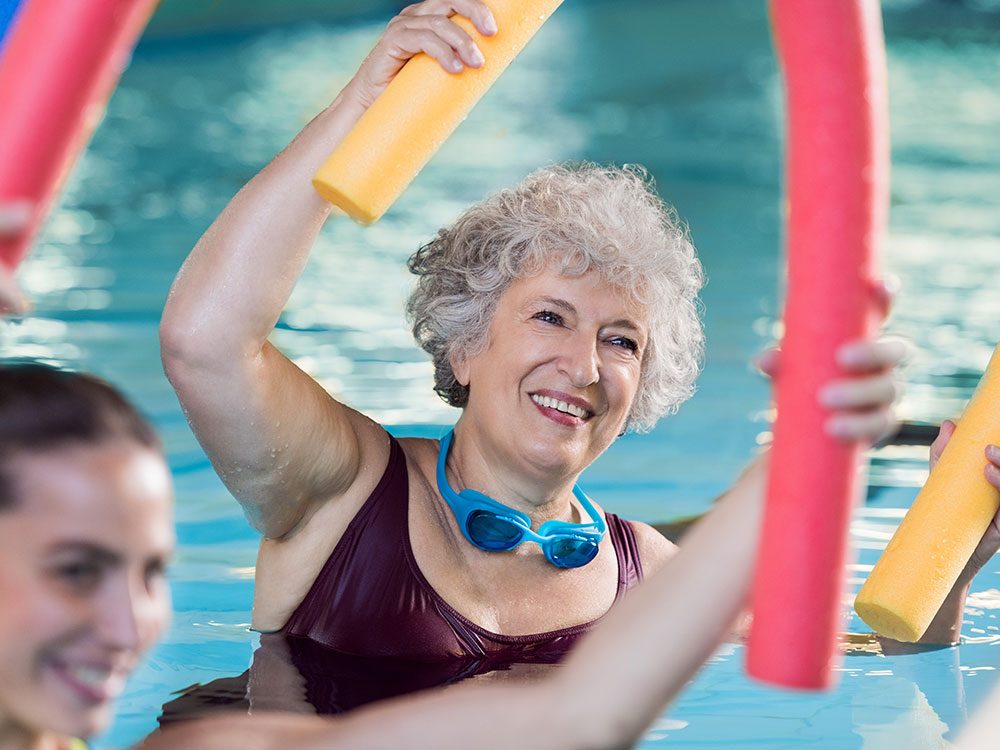
4. Active joints are healthy joints
Joints in the body are surrounded by a soft tissue called synovial membrane. This membrane produces a fluid (known as synovial fluid) that acts like lubricating oil in an engine, allowing your bones to move past one another more smoothly. Physical activity encourages circulation of this fluid, which can help relieve joint pain and stiffness. Water aerobics is an ideal activity to add to your weekly routine, since the water provides low-impact resistance, and warm temperatures can help soothe joints and ease mobility.
Believe it or not, these three foods can actually help ease knee pain.

5. An active life is an independent life
Getting active also helps increase your chances of living independently. The more you move, the more likely you’ll be able to keep doing the things you love—and in the case of household chores, some of the things you don’t love, too! Join a five-pin bowling team, a mall-walking group or try cross-country skiing at the local park or trail. These are great examples of how being active can give you the chance to connect with others in your community, while keeping both mentally and physically strong—and independent for as long as possible. You can also tap these four surprising benefits of group exercise classes.
For more, visit ParticipACTION. You’ll learn more on how to Age Better, and you may also be interested in how to Sleep Better, Think Better or Energy Better.